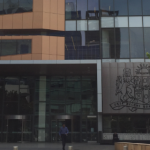Bail Laws and the Presumption of Innocence in New South Wales

New South Wales Police Minister David Elliott is pressing for a review of bail laws after coming on board with radio ‘shock jock’ Ray Hadley to slam the grant of bail to a man accused of sexual assault.
The 35-year old is alleged to have sexually assaulted a 56-year old woman as the pair walked home from the Panania Diggers Club in Revesby, in the early hours of Sunday morning.
It’s been reported that passersby heard the woman scream, and the man was held under citizens arrest until police arrived.
The 35-year old came before Bankstown Local Court later that day and was granted bail on a range of conditions, including that he regularly report to police, refrain from drugs and alcohol and not make any attempts to contact the complainant.
Mr Elliott has used the public platform to push for stricter bail laws, citing a handful of the thousands of bail applications that come before New South Wales courts every year to justify his stance.
Selected cases
Another case that has recently put bail laws under the spotlight is that of accused drug kingpin Mostafa Baluch, who evaded police for more than two weeks after cutting off his ankle monitor while on bail.
The incident sparked one of the biggest manhunts in recent Australian history, and Mr Baluch was found hiding in a Mercedes in a shipping container on the Gold Coast.
He was extradited back to Sydney to be brought before the courts.
And earlier this month, a senior member of the Finks motorcycle club, Daniel Middlebrook, was released on strict conditional bail after allegedly being caught with a handgun while on bail for other offences.
In another case, 23-year olds Salim Hamze and Trent Jeske were granted strict conditional bail after being accused of possessing a firearm.
The young men were alleged to have been involved in criminal groups in south-west Sydney.
Salim Hamze and his father Toufik Hamze were shot dead outside a home several days after Salim’s release in an execution style killing, which is believed to be part of the long-running Hamzy and Alameddine family feud.
Elliott the populist
The Police Minister has used these justify his assertion that he is ‘concerned with how some members of the judiciary are interpreting their role in the justice system’ and claim that judges and magistrates have ‘disregarded community safety’.
It is an argument that is likely to garner community support, given the public hears only about the most contentious of the thousands of bail decisions made each year.
It is also interesting to note that populists like Elliott and Hadley invariably gloss over the details of the bail application they publicise, and do not explain the breadth of considerations before that led to the decisions.
Presumption of innocence
It is also notable that these populists make little or no mention of the presumption of innocence – that a person is considered innocent until and unless proven guilty in a court of law – or that many defendants who are held behind bars on remand for months or even years eventually have the charges withdrawn by the prosecution or dismissed by the courts.
There is also little mention of the many conditions imposed on defendants while they are awaiting their ‘day in court’ – which can included daily reporting to police, curfews, non association orders, forfeiting passports, electronic monitoring and prohibitions from entering venues and/or areas.
It seems these populists believe that once police have accused a person of a serious crime, they should be assumed guilty than presumed innocent.
The systematic strengthening of bail laws since the enactment of the ‘new’ Bail Act of 2013 (enacted in 2014)– which included ‘show cause’ requirements – has in fact significantly diluted the presumption of innocence and, in many instances, made it far more difficult to achieve bail than to have a case dismissed in court.
A brief history of bail laws in NSW
Prior to early 2014, NSW bail laws were set out in the Bail Act 1978. This Act was the result of a review that recommended a presumption of bail for all imprisonable offences.
But, due to a high-profile case at the time, the bill was passed with an exception for the presumption of bail for armed and violent robbery offences.
This exemption then paved the way for a series of amendments to the 1978 Act, which made bail more difficult to obtain.
Following a further review, the 1978 Act was repealed and replaced with a more simplified framework, under the Bail Act 2013.
The Bail Act 2013
The 2013 Act, which came into effect in May 2014, established a two stage unacceptable risk test, which replaced the presumption system.
The first stage involved the relevant bail authority identifying any unacceptable risks the defendant might pose if they were released on bail.
Under section 17 of the Bail Act, unacceptable risks include the likelihood:
- That the defendant will fail to appear in court on their nominated date.
- That they will commit a serious offence while free on bail.
- That if they are released they will be a danger to the safety of individuals, victims or the community as a whole.
- That they will interfere with evidence or witnesses.
Under section 18 of the Act, the court could take into account a wide range of factors when deciding whether there was an unacceptable risk, including.
- The nature and seriousness of the alleged offence,
- The strength of the prosecution case,
- the background of the defendant,
- any history they have of violence or of not complying with bail conditions, and
- the likelihood of them getting a custodial sentence if they are convicted.
If the defendant was found to pose an unacceptable risk, then the second part of the test was to determine whether there were bail conditions that could sufficiently mitigate that risk.
If so, the defendant would be granted bail. If not, he or she would be refused bail and detained in prison on remand.
Further eroding the presumption of innocence
But in September 2014, just a few months after the commencement of the 2013 Act, amendments were passed with bipartisan support that significantly tightened bail restrictions.
The Bail Amendment Act 2014 took effect on 28 January 2015. Among other things, the amendments introduce “show cause” provisions. Section 16B of the 2013 Act contains a set of serious offences where bail is refused outright. A person charged with one of these offences must then “show cause” as to why they shouldn’t be refused bail.
At the time the Amendment Act was passed in September 2014, NSW Greens MLC David Shoebridge said the legislation “undermines the presumption of innocence for every citizen in NSW, and is an attack on this fundamental principle in our criminal justice system.”
One-third of prison inmates are on remand
The Bureau of Crime Statistics and Research (BOCSAR) directly attributed the sharp and notable increase in the prison population after the enactment of the new bail regime to an increase in bail refusals.
Over time, prison numbers have continued to grow and overcrowding is a problem that is rarely reported, and has been of significant concern during the pandemic.
In 2020, figures from the Australian Bureau of Statistics showed (ABS) that around 33 percent of the total prison population is now made up of people who are on remand, awaiting trial.







